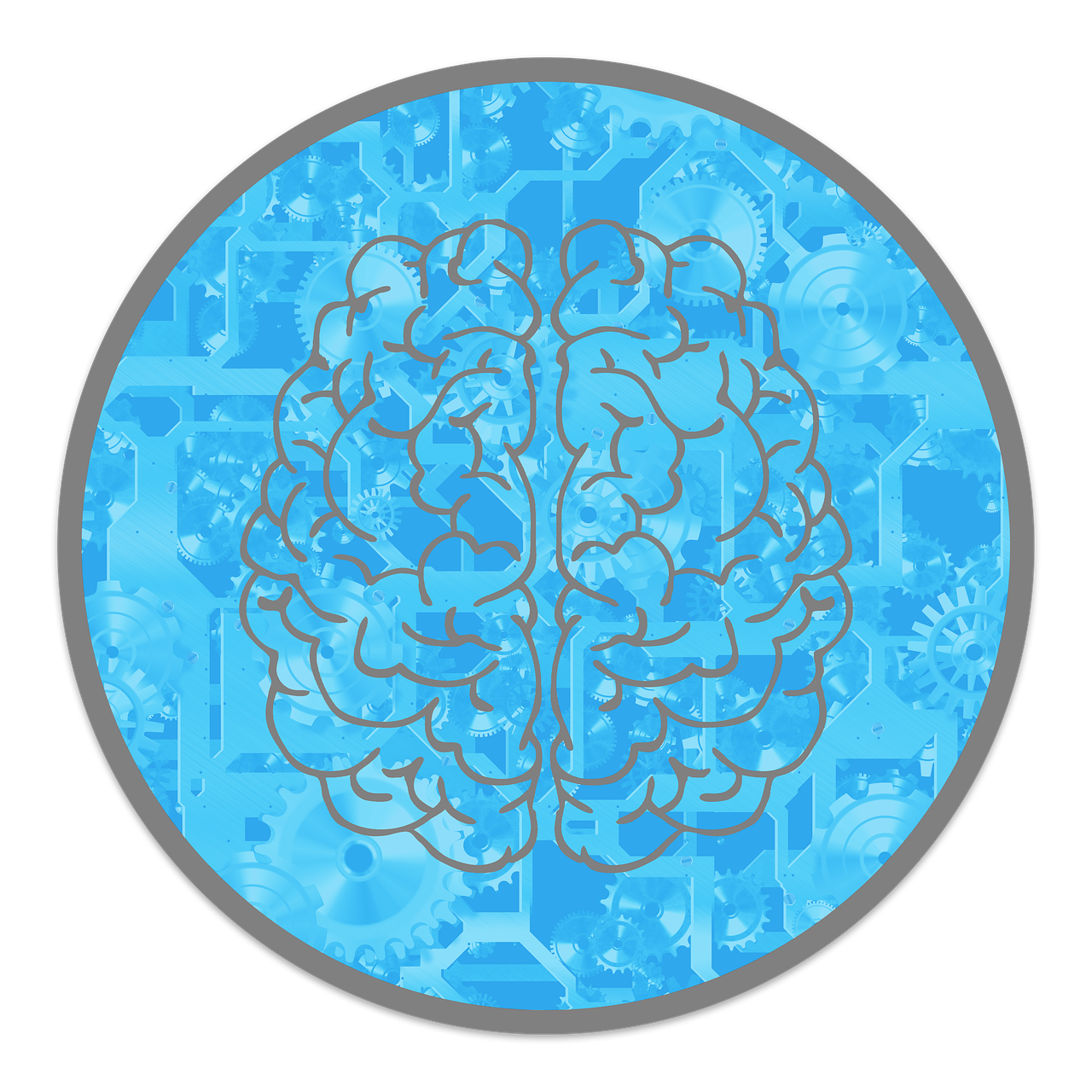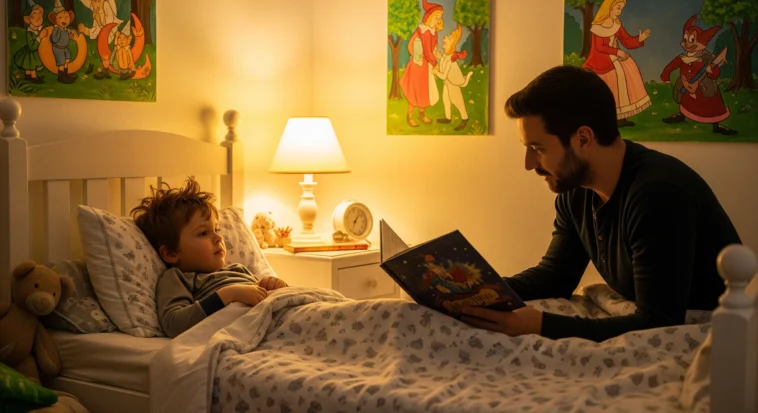
Every night, parents around the world do the same thing: get their kids to sleep.
Stories, songs, routines—it’s a tradition that’s been around forever.
But where did these bedtime rituals come from? And why do we still do them?
Looking at their history shows how different cultures have used bedtime to bond with kids, teach values, and help everyone get some actual sleep.
From ancient times to now, these routines have changed with tech, science, and parenting styles—but the goal stays the same: calm the chaos and get the kids to bed.
Ancient Beginnings: The Dawn of Bedtime Traditions
Way before nightlights and stuffed animals, early humans already had basic bedtime habits.
Cave art shows families hanging out in the evenings—probably swapping stories or just chilling by the fire before calling it a night.
Even back then, people got that sleep mattered.
In ancient Egypt, bedtime wasn’t just sleep—it was protection. Parents said prayers and gave kids amulets to keep nightmares and bad spirits away.
Some scrolls from 1550 BCE even mention lullabies. Moms were basically the OG sleep DJs.
The Greeks and Romans? They made bedtime a full-on event.
Greek families told myths at night—think bedtime stories but with gods, monsters, and life lessons built in.
Romans did the same but added family prayers.
Dads often led the rituals, making sure the kids got their blessings before bed.
Why stories were a big deal?
Before books were a thing, stories were how people passed down wisdom.
And bedtime was prime time for that.
You got your life lessons and entertainment all in one go.
The Celtic druids took it up a notch. They told wild tales with fairies, heroes, and moral tests to help kids figure out right from wrong.
A lot of the fairy tales we still tell at bedtime? You can trace them right back to these ancient storytellers.

Medieval and Renaissance Developments
Prehistoric parents had a bedtime game too
Even way back—think cavemen era—people had sleep routines.
We’re talking basic stuff, like huddling around the fire at night.
Cave art shows families chilling together in the evenings, which probably helped kids wind down before bed.
No bedtime apps or white noise machines—just firelight, family, and maybe a carved stick toy.
Ancient Egypt
Egyptian parents took bedtime seriously.
They thought sleep left kids vulnerable to evil spirits, so they used protection rituals before bed.
That meant prayers, blessings, and giving kids special amulets to keep the bad dreams away.
And yes, moms sang lullabies—some scrolls from around 1550 BCE mention songs to calm kids and keep the nightmares out.
Basically, ancient Egyptian moms were the original Spotify sleep playlist.
Greece and Rome
In ancient Greece, bedtime was all about storytelling. Families gathered at night, and adults would tell myths—think Zeus, Hercules, monsters, and big life lessons.
It was entertainment, school, and therapy rolled into one.
Romans did it too. The head of the household would lead prayers and blessings before bed.
Storytime wasn’t just fun—it taught kids how to be decent humans (and probably scared them into behaving).
Oral tradition
Long before books were on shelves, people passed down knowledge through stories—especially at bedtime.
It was the perfect time to teach stuff like why the sun rises, why honesty matters, or what not to do if you meet a troll in the woods.
Celtic druids were pros at this. Their stories were wild—magic, heroes, tricky moral choices—and they helped kids understand their place in the world.
If you’ve ever heard a fairy tale, you’ve felt the ripple of those old-school bedtime stories.
The Industrial Revolution: Changing Family Dynamics
Work, factories, and less parent time
When the Industrial Revolution hit, everything changed—especially for families.
Parents were suddenly working long, exhausting shifts in noisy factories, not chilling at home by sunset.
That meant bedtime duty often fell to older siblings, grandparents, or anyone not stuck on the night shift.
But here’s the twist: books got cheaper thanks to better printing tech.
More families could actually afford bedtime stories. This was a big deal.
For the first time, stories weren’t just for rich kids with libraries—they were for everyone.
Brothers Grimm
In the early 1800s, the Brothers Grimm took old German folk stories and published them as books. Think Hansel and Gretel, Cinderella, Snow White—all the hits.
These weren’t just bedtime fillers—they were dark, weird, and packed with life lessons (and the occasional witch in an oven).
Their stories blew up across Europe and set the template for what a “bedtime story” looked like—adventure, danger, magic, and a moral at the end.
Basically, fairy tales became the Netflix of the 19th century bedtime scene.
The Victorian Era
The Victorians were intense about raising kids “the right way.”
They turned bedtime into a full-on ritual with steps, rules, and moral lectures.
Here’s what the average Victorian bedtime looked like:
- Bath time – Not just to clean off the dirt, but to “clean the soul.”
- Prayers – Kids had to memorize and recite them nightly.
- Story reading – But only “wholesome” books that taught manners.
- Moral lessons – Because nothing says sweet dreams like a warning about lying.
- Strict bedtimes – No “just five more minutes” allowed.
Still, some fun started to creep in.
When Alice’s Adventures in Wonderland dropped in 1865, it changed things. Suddenly, stories didn’t have to be sermons.
They could be silly, strange, and full of imagination—with or without a moral message.
That opened the door for bedtime stories to be more than just mini lectures—they became a way to explore wonder before sleep.

Early 20th Century: Psychology Meets Tradition
Child psychology changes the bedtime game
In the early 20th century, scientists started paying real attention to how kids grow and learn.
People like Maria Montessori and Jean Piaget showed that kids need routines and emotional security—not just rules and punishments.
Basically, bedtime wasn’t just about sleep anymore. It was about helping kids feel safe and calm.
Then came Dr. Benjamin Spock. His book Baby and Child Care (1946) told parents to chill out.
Instead of forcing strict bedtimes, he suggested flexible routines built around the child’s needs.
That was a big shift from the old-school “because I said so” parenting style.
The radio enters the bedroom
When radios became popular in the 1920s and ’30s, bedtime routines got a tech upgrade.
Families would gather around to listen to kid-friendly shows like Let’s Pretend or adventure stories.
It was like podcast bedtime—but with big knobs and static.
Kids could now fall asleep to voices telling stories, not just their parents reading from a book.
It made storytelling more exciting and brought families together for some chill, screen-free bonding time.
Music gets in on the action
Recorded music also changed the bedtime vibe.
For the first time, lullabies weren’t just passed down by grandma—they could be recorded, played back, and shared.
This helped spread classic sleep songs across cultures and made it easier for tired parents to hit “play” instead of singing Twinkle, Twinkle for the 500th time.
Modern Era: Diversity and Adaptation
Post-war changes
Post-WWII life changed everything. Families moved to the suburbs, houses got bigger, and suddenly—kids had their own rooms.
That meant bedtime routines got more personal.
Parents could customize the whole wind-down: stories, songs, even nightlights shaped like rocket ships.
The 1950s and ’60s were big for picture books too.
Authors like Dr. Seuss, Maurice Sendak, and Margaret Wise Brown made bedtime stories that were fun and sleep-friendly.
Goodnight Moon (1947) became the bedtime MVP—its slow rhythm and soft tone were basically a lullaby in book form.
Television’s influence
When TVs rolled into living rooms, bedtime had competition. Instead of reading books, kids started zoning out to cartoons.
Some shows were great—Mister Rogers’ Neighborhood and Reading Rainbow kept things calm, kind, and educational.
But not all TV was bedtime-friendly.
Experts started warning parents: too much screen time before bed could mess with sleep.
Bright screens and loud shows didn’t exactly scream “sweet dreams.”
Families had to find balance—story first, then maybe a little Rogers, then lights out.
Cultural exchange and globalization
As the world got more connected, families started borrowing bedtime ideas from different cultures.
Breathing exercises, kids’ yoga, and mindfulness routines started showing up in Western homes.
Instead of just “read a book, go to bed,” some routines added deep breathing, light stretches, or quick gratitude check-ins.
These new habits weren’t just trendy—they helped kids relax, clear their minds, and fall asleep easier.
Bedtime became part chill-out, part global mashup.

Contemporary Bedtime Rituals: Balancing Tradition and Technology
Screens vs sleep
Let’s be real—bedtime in the 21st century is tricky.
Kids have phones, tablets, and streaming shows just a tap away.
Research from the American Academy of Pediatrics says too much screen time before bed messes with sleep and can even affect health.
But it’s not all bad news. Tech also helps. Grandparents can now read bedtime stories over video calls.
There are apps with calming stories, guided meditations, even bedtime timers that make routines easier (and less of a fight).
Evidence-based approaches
Modern routines aren’t just made up—they’re backed by research.
Here’s what experts say a solid bedtime routine can do:
- Better sleep – Routines help set your internal clock.
- Emotional comfort – Kids feel safer when they know what’s coming next.
- Stronger grades – Sleep helps the brain focus and remember stuff.
- Closer bonds – Bedtime is prime time for parent-kid connection.
- Fewer meltdowns – Well-rested kids handle emotions better.
Cultural preservation in a global world
Even in a globalized world, many families still hold on to their bedtime traditions.
Some record lullabies in their native language and share them online.
Others mix cultural stories from “back home” with local customs to create something new.
It’s bedtime, but it’s also culture, memory, and identity—all wrapped into one quiet routine.
Contemporary Innovations
Here’s what modern bedtime might include now:
- Weighted blankets – For calming anxiety and helping kids settle
- White noise machines – To block out the chaos
- Smart lights – That dim slowly like a fake sunset
- Sleep trackers – To monitor how much actual rest is happening
- Kids’ meditation apps – Think bedtime meets mindfulness
Global Perspectives on Bedtime Rituals
Scandinavia
In places like Norway and Sweden, bedtime is all about hygge—basically cozy blankets, warm lights, and serious family chill time.
It’s low-stress, high-snuggle.
Oh, and here’s the wild part: babies nap outside.
Yep, even when it’s cold. Parents bundle them up and park the stroller in fresh air because, according to them, it helps kids sleep better.
Japan
Japanese families often co-sleep—parents and kids all crash on futons in the same room.
Bedtime usually includes soft lullabies called komoriuta.
Sometimes, they end the day with forest bathing—basically a walk in nature to relax and disconnect.
Think of it as bedtime prep, but with trees instead of TikTok.
India
In Indian homes, bedtime often mixes tradition and science.
Parents might give warm oil massages or herbal teas before lights out.
Deep breathing? Totally a thing.
Then comes storytime, usually pulled from massive epics like the Ramayana or Mahabharata.
Imagine getting your bedtime lessons from ancient warriors and gods.
Africa
In many African cultures, bedtime isn’t just mom or dad reading a book.
It’s everyone—aunties, uncles, grandparents—sharing stories around the fire or in the home.
These tales often come from ancestors and teach life lessons, history, and culture.
No YouTube—just real people and powerful stories passed down by heart.
Indigenous wisdom
Across Indigenous cultures, bedtime connects deeply with nature and tradition.
Native American families might do smudging rituals to clear energy before bed.
Sleep follows the rhythm of the natural world, not just a clock.
In Aboriginal Australia, bedtime means Dreamtime stories—myths that explain the land, the sky, and how everything connects. It’s storytelling with a serious soul.

Final Thoughts: Why Bedtime Still Matters
Bedtime rituals have been around forever—and for good reason. No matter the time period or culture, they help kids feel safe, connected, and calm before sleep.
Whether it’s ancient prayers or meditation apps, the goal stays the same: comfort, love, and rest.
Even in today’s fast-paced, tech-filled world, those old-school bedtime basics still work.
They teach us that mixing tradition with new tools is the real win.



